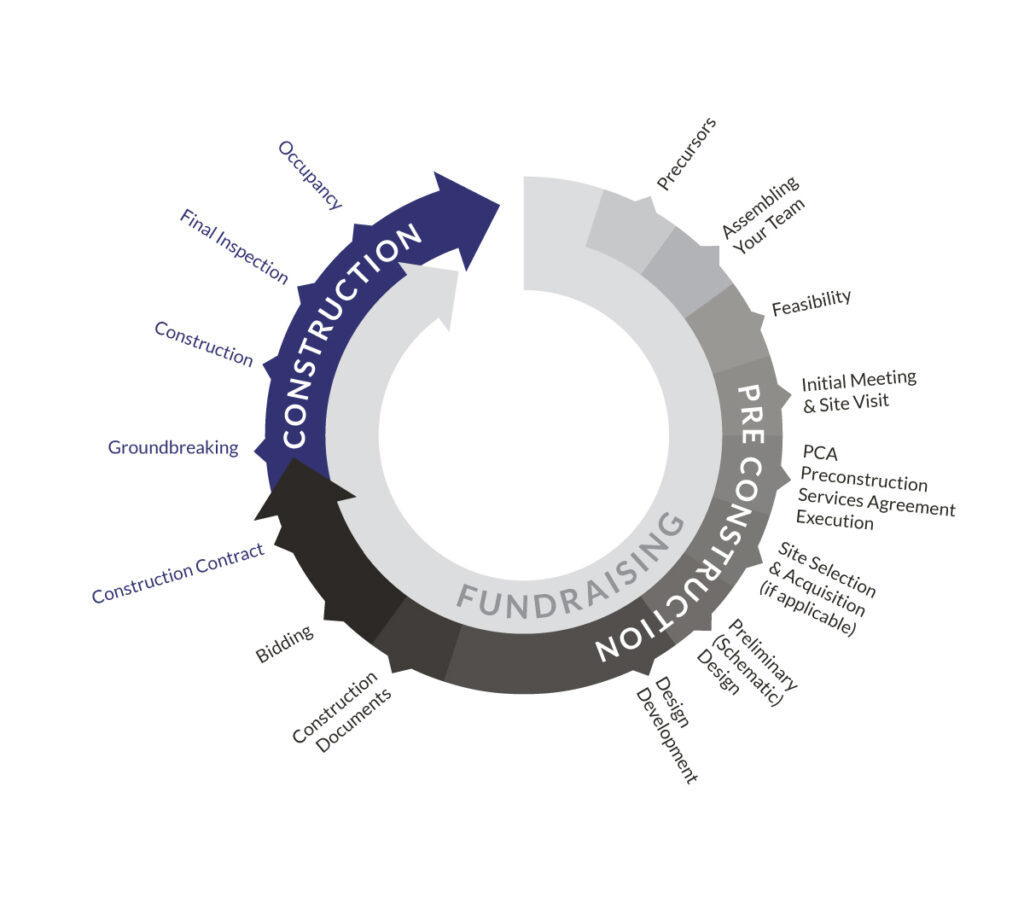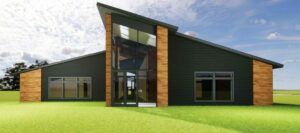This is the third article in our four-part series detailing the nonprofit building process.
The first step: Successful Nonprofit Construction Begins with Your Team
The second: Assessing the Feasibility of Your Nonprofit Building Goal
The fourth: Nonprofit Preconstruction Explained: Part 2
Now you are ready to move into the preconstruction part of the building process. At this point, some level of commitment, such as a preconstruction services agreement with your contractor (and associated fee), is required. Preconstruction typically takes between four and 18 months (often longer than construction), and is divided into phases, including programming, site suitability and analysis, schematic design, design development, construction documents and more.

Preconstruction Services Agreement
NCI-Roberts Construction recommends nonprofits sign a Preconstruction Services Agreement (PCA) prior to beginning preconstruction. The agreement and associated fee covers architectural and engineering services if applicable, budgeting and other key support; defines the roles and responsibilities of all stakeholders, including the client; and establishes scope and timeline. It functions as a mutual faith agreement to move forward with the project as a team, and it formally initiates contractor activity.
Programming and Site Suitability and Analysis
Preconstruction begins with site visits and meetings to better understand the intended uses of the space, and the needs and priorities of the various user groups. If the project is new construction or involves an addition, the team also analyzes the land’s suitability for building during site visits.
Schematic Design

Schematic site plan showing future phase of construction
Schematic Design (SD) primarily refers to the first set of architectural drawings. When completed in coordination with a contractor, the drawings are accompanied by budget estimates and additional data and strategy. This phase of preconstruction offers many opportunities for cost control or value engineering.
Intentionally creating multipurpose spaces is one strategy. For example, a school might need a multipurpose space for board meetings, graduation ceremonies, extra classroom space, special lesson plans, performances, fundraiser activities, guest speakers, and more. This “hardworking square footage” ensures your nonprofit gets the most use out of the space.
Understanding the impact of selections on cost per square foot is another key component. NCI-Roberts offers a “bronze silver gold” process, estimating different quality levels of various building components. We can also estimate options that can be decided later in the process when there is a better understanding of funds and financing.
Master planning and phasing prioritizes immediate needs over additional wants or “nice to haves,” enabling a nonprofit’s physical expansion to better coordinate with its goals and financial growth. This long-term strategy helps avoid wasted effort and expense.
Input and Buy-In

Schematic rendering for capital campaign materials
Once a schematic design draft is complete, a nonprofit building committee should share it with a slightly wider audience and seek additional input. This “soft launch” within focus groups can provide key buy-in, especially if feedback is incorporated as SDs are finalized.
The last step of schematic design is vision casting, where final SD drawings, budget estimates, and benefits of building are shared with the entire organization. This step also sets the stage for formal fundraising, like a capital campaign.
Contact our team to learn more about preconstruction and the advantage of involving a contractor early.